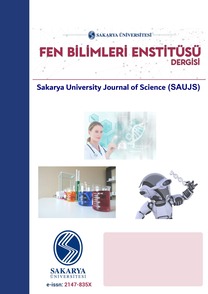On evaluation and comparison of blast loading methods used in numerical simulations
___
P. D. Smith and J. G. Hetherington, Blast and ballistic loading of structures. 2003, Eastbourne, Great Britain: Antony Rowe Ltd.U.S. Army Corps of Engineers, N.F.E.C., Air Force Civil Engineering Support Agency, Design and analysis of hardened structures to conventional weapons effects, in Supersedes TM 5-855-1/NAVFAC P- 1080/AFJAM32/DSWA DAHSCWEMAN-97 August 1998. 2002, Department of the Army: US Army Corps of Engineers and Defense Special Weapons Agency, Washington, DC.
G. Randers-Pehrson and K. A. Bannister, Airblast Loading Model for DYNA2D and DYNA3D, in ARL-TR-1310. 1997, US Army Research Laboratory: Aberdeen Proving Ground.
J. O. Hallquist, LS-DYNA keyword user’s manual. 2007, Livermore Software Technology Corporation: California, U.S.A.
G. Sławiński, M. Świerczewski, and P. Malesa, Modelling and numerical analysis of explosion underneath the vehicle. Journal of KONES Powertrain and Transport, 2017. 24(4).
J. Donea, S. Giuliani, and J.-P. Halleux, An arbitrary Lagrangian-Eulerian finite element method for transient dynamic fluid-structure interactions. Computer methods in applied mechanics and engineering, 1982. 33(1-3): p. 689-723.
S. G. Lee, et al., Shock Response Analysis of Blast Hardened Bulkhead in Partial Chamber Model under Internal Blast. Procedia Engineering, 2017. 173: p. 511-518.
T. P. Slavik, A Coupling of Empirical Explosive Blast Loads to ALE Air Domains in LS-DYNA. in 7th European LS-DYNA Conference. 2009. Salzburg, Austria: Livermore Software Technology Corporation.
S. H. Than, et al., Fluid-Structure Interaction involving Close-in Detonation Effects on Column using LBE MM-ALE Method, in 9th European LS-DYNA Users Conference. 2013, Dynamore: Manchester, UK.
Z. S. Tabatabaei, et al., Experimental and numerical analyses of long carbon fiber reinforced concrete panels exposed to blast loading. International Journal of Impact Engineering, 2013. 57: p. 70-80.
C. N. Kingery and G. Bulmash, Airblast parameters from TNT spherical air burst and hemispherical surface burst. 1984, Ballistic Research Laboratory, Aberdeen Proving Ground, Aberdeen, MD.
A. L. Kozak, et al., Validation of the ALE Methodology by Comparison with the Experimental Data Obtained from a Sloshing Tank, in 14th International LS-DYNA Users Conference. 2016: Detroit.
B. M. Dobratz, LLNL explosives handbook: properties of chemical explosives and explosives and explosive simulants. 1981, Lawrence Livermore National Laboratory: California, U.S.A.
J. O. Hallquist, LS-DYNA theory manual, in, Livermore Software Technology Corporation, 2006.
L. Schwer, H. Teng, and M. Souli, LS-DYNA Air Blast Techniques: Comparisons with Experiments for Close-in Charges. 10th European LS-DYNA Conference 2015. Würzburg, Germany2015, 2015.
- ISSN: 1301-4048
- Yayın Aralığı: 6
- Başlangıç: 1997
- Yayıncı: Sakarya Üniversitesi Fen Bilimleri Enstitüsü
Synthesis of TiN Powders Using Dynamic CRN Method
NURAY CANİKOĞLU, Betül ÖZDEMİR, Yıldız YARALI ÖZBEK, Ali Osman KURT
Optimization of Turning Process by Using Taguchi Method
Seasonality of Precipitation in Turkey: Past, Present and Future Assessments
Evaluation of ERP softwares with fuzzy AHP integrated TODIM method
Surface alloying of titanium with nickel by using cathodic arc based plasma treatment
Nagihan SEZGİN, ERKAN KAÇAR, MUHAMMET KÜRŞAT KAZMANLI, MUSTAFA KAMİL ÜRGEN
TUĞBA KESKİN GÜNDOĞDU, Yasemin ERSOY, NURİ AZBAR
On evaluation and comparison of blast loading methods used in numerical simulations
Determination of Solubility Characteristic of (Bi, Gd) Substitution in Bi-2223 Inorganic Compounds
The treatment of Slaughterhouses wastewater by An Up Flow - Anaerobic Sludge Blanket (UASB) reactor
Vehicle Dynamics Simulations on Road and Off-Road Surfaces – A Comparative Analysis
